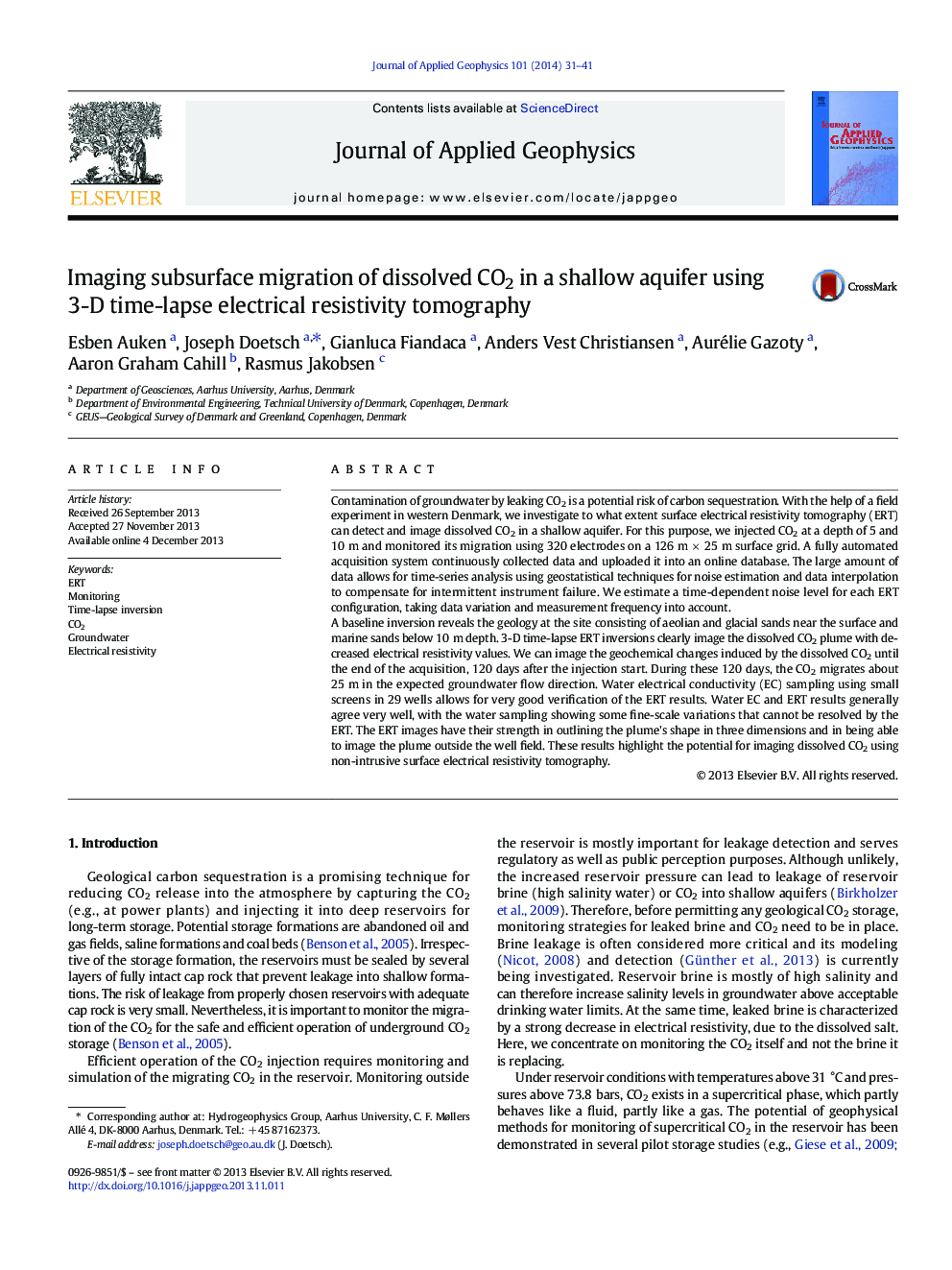| Article ID | Journal | Published Year | Pages | File Type |
|---|---|---|---|---|
| 6447305 | Journal of Applied Geophysics | 2014 | 11 Pages |
Abstract
A baseline inversion reveals the geology at the site consisting of aeolian and glacial sands near the surface and marine sands below 10Â m depth. 3-D time-lapse ERT inversions clearly image the dissolved CO2 plume with decreased electrical resistivity values. We can image the geochemical changes induced by the dissolved CO2 until the end of the acquisition, 120Â days after the injection start. During these 120Â days, the CO2 migrates about 25Â m in the expected groundwater flow direction. Water electrical conductivity (EC) sampling using small screens in 29 wells allows for very good verification of the ERT results. Water EC and ERT results generally agree very well, with the water sampling showing some fine-scale variations that cannot be resolved by the ERT. The ERT images have their strength in outlining the plume's shape in three dimensions and in being able to image the plume outside the well field. These results highlight the potential for imaging dissolved CO2 using non-intrusive surface electrical resistivity tomography.
Related Topics
Physical Sciences and Engineering
Earth and Planetary Sciences
Geophysics
Authors
Esben Auken, Joseph Doetsch, Gianluca Fiandaca, Anders Vest Christiansen, Aurélie Gazoty, Aaron Graham Cahill, Rasmus Jakobsen,
